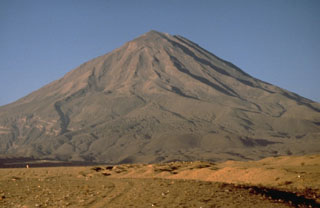Report on El Misti (Peru) — 26 February-4 March 2025
Smithsonian Institution / US Geological Survey
Weekly Volcanic Activity Report, 26 February-4 March 2025
Managing Editor: Sally Sennert.
Please cite this report as:
Global Volcanism Program, 2025. Report on El Misti (Peru) (Sennert, S, ed.). Weekly Volcanic Activity Report, 26 February-4 March 2025. Smithsonian Institution and US Geological Survey.
El Misti
Peru
16.2991°S, 71.4056°W; summit elev. 5793 m
All times are local (unless otherwise noted)
The Instituto Geofísico del Perú (IGP) reported that three lahars carrying blocks traveled down El Misti’s flanks during 27-28 February. The first descended the Matagente drainage on the NW flank at 1655 on 27 February, the second descended the Huarangal-Los Incas drainage on the SW flank at 1725 on 27 February, and the third descended the SE flank in the Agua Salada, the Peña Colorada, or a nearby drainage at 1725 on 28 February. The public was warned to stay away from drainages, roads, and bridges on the flanks where there had been lahars. The Alert Level remained at Green (the lowest level on a four-color scale).
Geological Summary. El Misti is a symmetrical andesitic stratovolcano with nested summit craters immediately NE of the city of Arequipa, Peru. Eruptions from the active cone began about 13,700 and 11,300 years ago, within a 1.5 x 2 km caldera that underwent collapse about 50,000 years ago. A large scoria cone has grown with the 830-m-wide outer summit crater. At least 20 tephra-fall deposits and numerous pyroclastic-flow deposits have been documented during the past 50,000 years, including a pyroclastic flow that traveled 12 km S about 2,000 years ago. The most recent activity has been dominantly pyroclastic, and strong winds have formed a parabolic dune field of volcanic ash extending up to 20 km downwind. An eruption in the 15th century affected nearby Inca inhabitants. Some reported eruptions may represent increased fumarolic activity.

